Apple Podcasts , Spotify, Listen Here


Apple Podcasts , Spotify, Listen Here
In this podcast, we cover a new article on convalescent plasma – this time, one that is promising! We cover Libster et al in NEJM, an RCT that administered placebo or plasma to older outpatients with mild COVID-19.
We have covered convalescent plasma multiple times before, including this introduction in May 2020, an RCT in June 2020, and another update in August 2020.
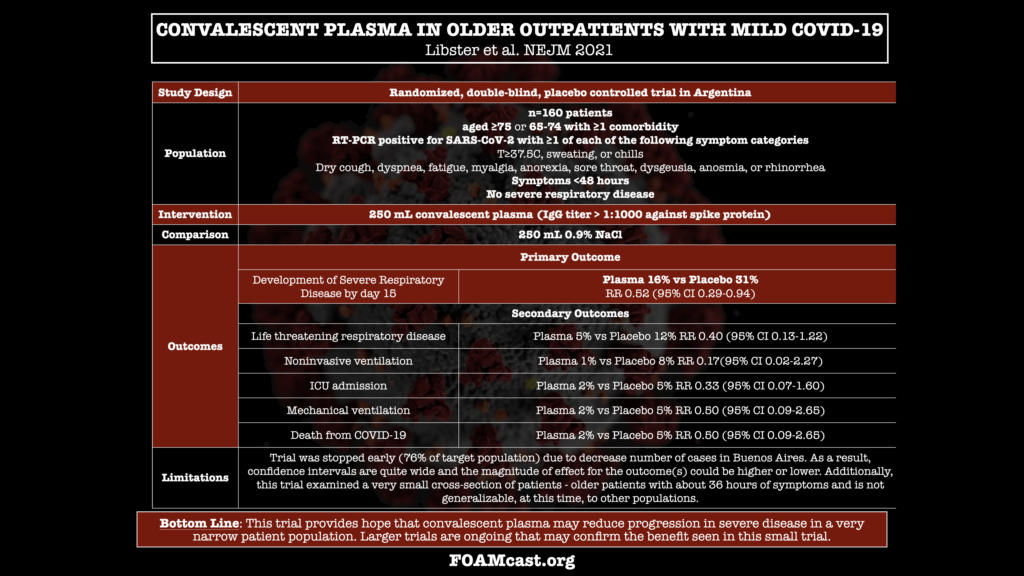

In December 2020, the CDC released updated treatment recommendations for gonococcal infections.

Pulse oximetry is one of the key vital signs that we use to triage patients and make treatment and disposition decisions. Especially during the COVID-19 pandemic, when hospitals are full, many hospitals are using pulse oximetry thresholds to determine outpatient versus inpatient management. Despite the ubiquity of pulse oximetry, prior studies have found that the devices might not be as accurate in patients with different skin pigmentation. In this podcast we review a new article in NEJM.
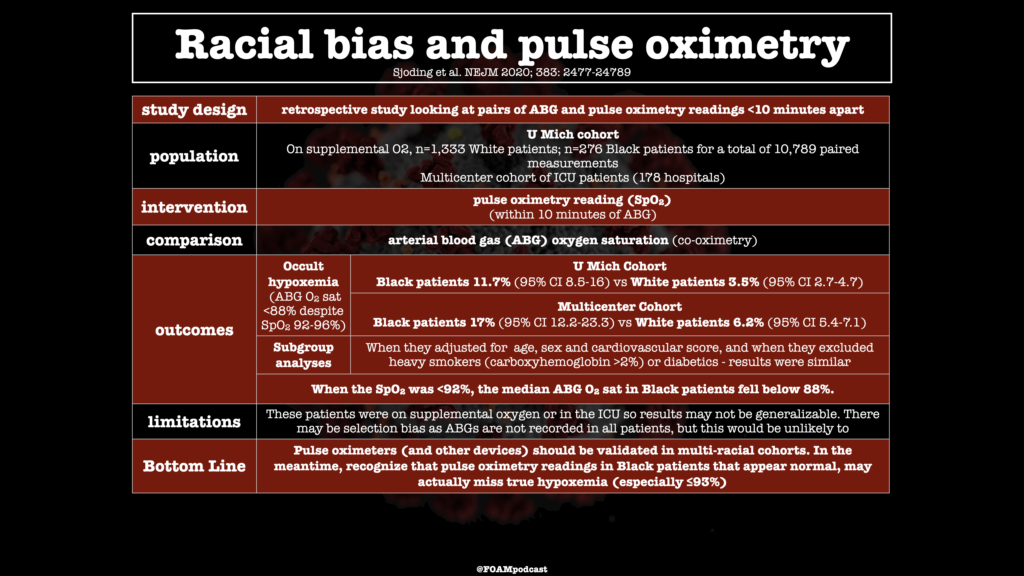
Despite multiple Phase II/III vaccine trials of >30,000 participants, pregnant patients or those who are lactating have been largely excluded. In this podcast, we cover what we know (and what we don’t know thus far). The Pfizer BNT162b2 trial data submitted for FDA Emergency Use Authorization does include information on a minuscule number of patients who were immunized and became pregnant, as does the Moderna briefing. Although the risk of the vaccine in pregnancy is thought to be very low, the decision to receive the vaccine during pregnancy should balance the risks of the pregnant individual (to their health/family etc) and their comfort. At the University of Massachusetts Medical School – Baystate, we created a decision aid to help.
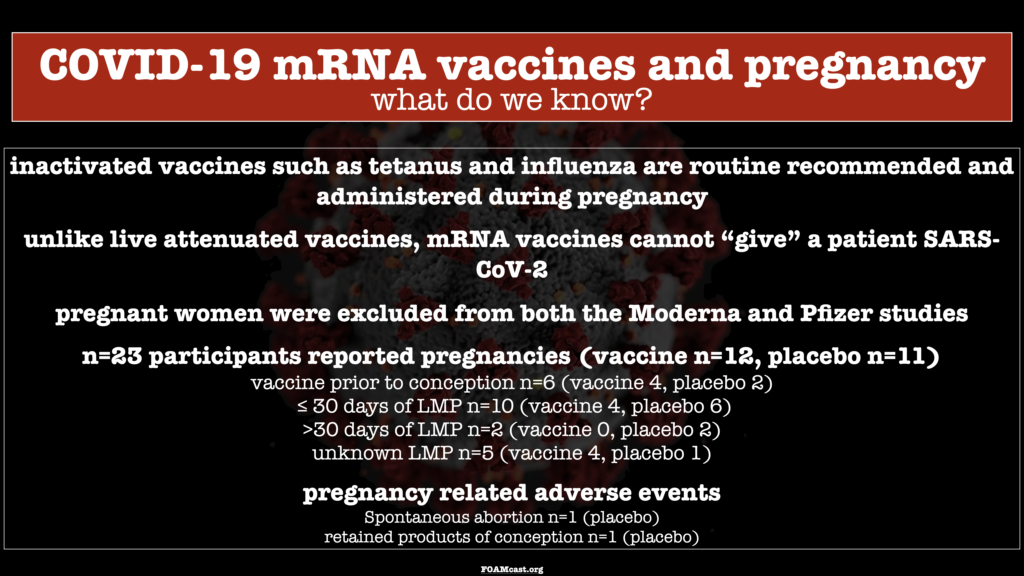
The biggest potential risk appears to stem from the reactogenicity of the vaccine – specifically the development of fever. However, the evidence on the harms from maternal fever during pregnancy is variable. Regardless, individuals who are pregnant and receive the vaccine, should probably take acetaminophen if they develop fever.
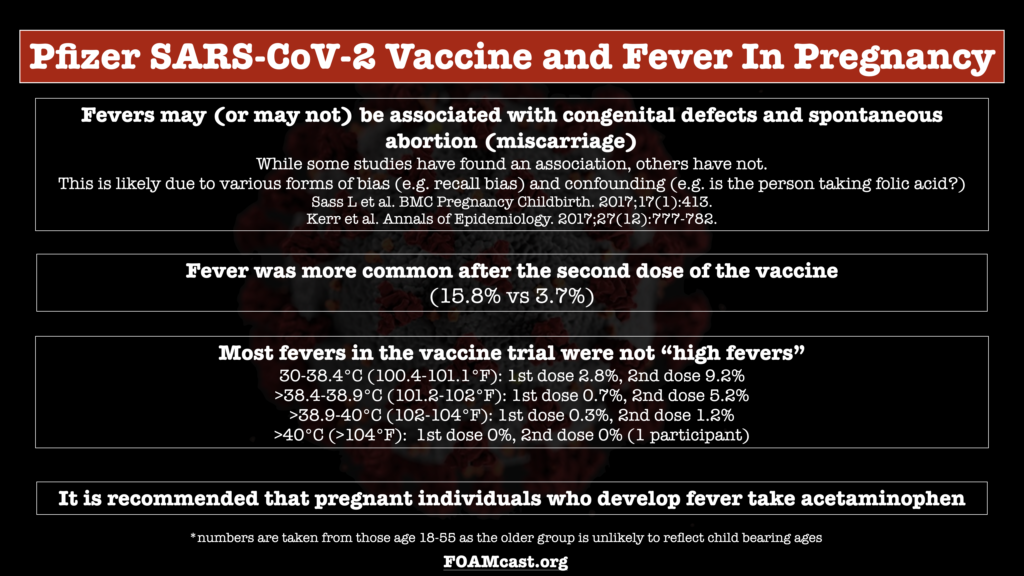
The Society for Maternal and Fetal Medicine has released statements on vaccines in SARS-CoV-2.
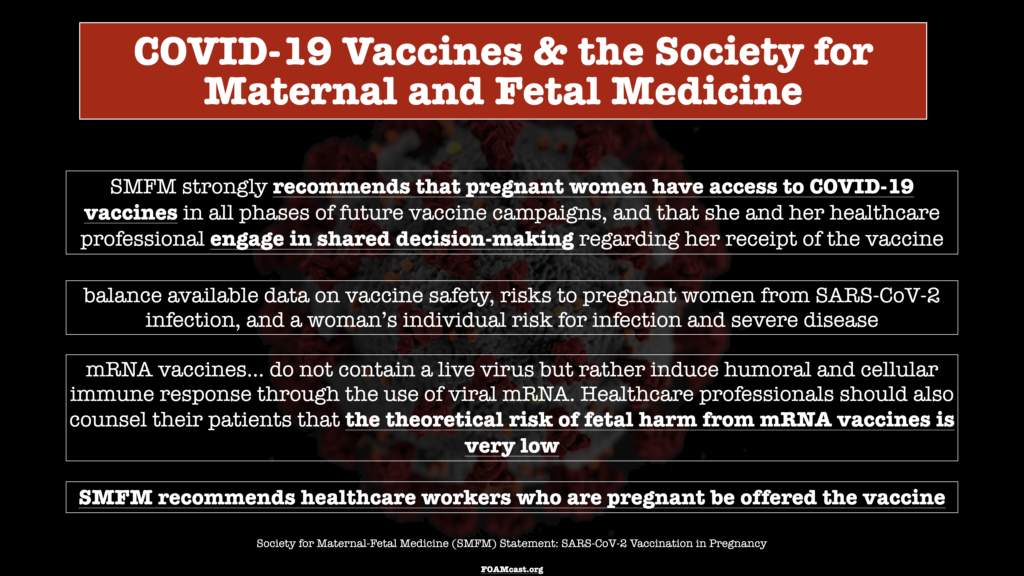
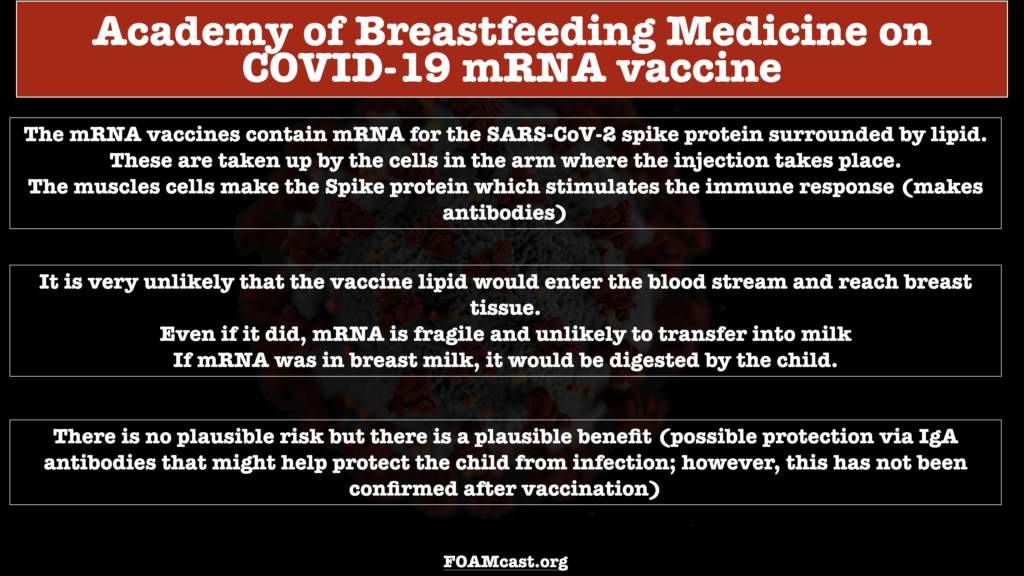
In the United Kingdom, Public Health England has released guidance for their population on vaccination in pregnancy and breastfeeding which are rooted in the lack of data
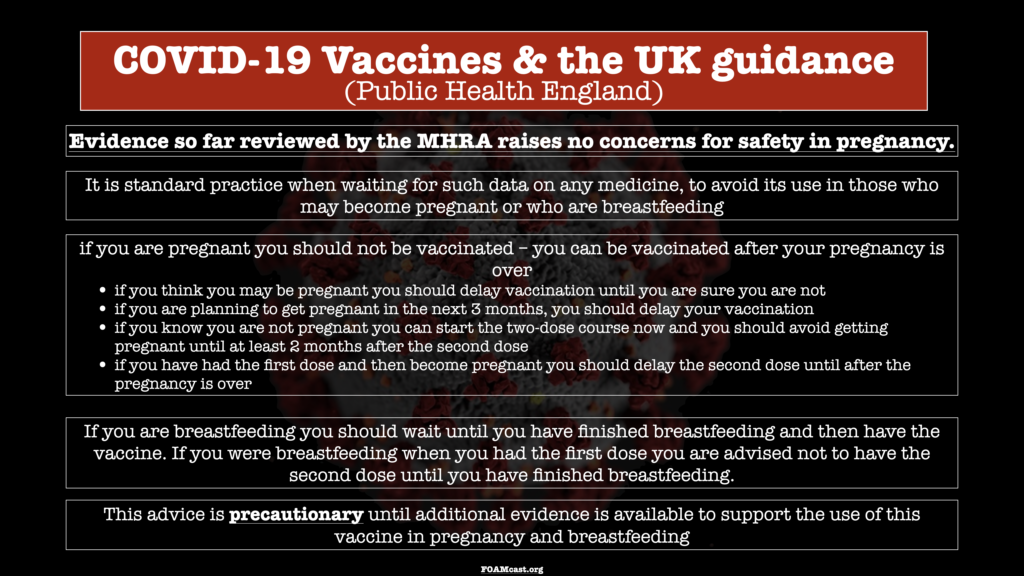
In this episode, we review what we know, as of November 29, 2020, about the major SARS-CoV-2 vaccine candidates – their mechanisms of action and preliminary data. Be aware that most of the data is preliminary and exact numbers may change (and long-term data is not yet available)



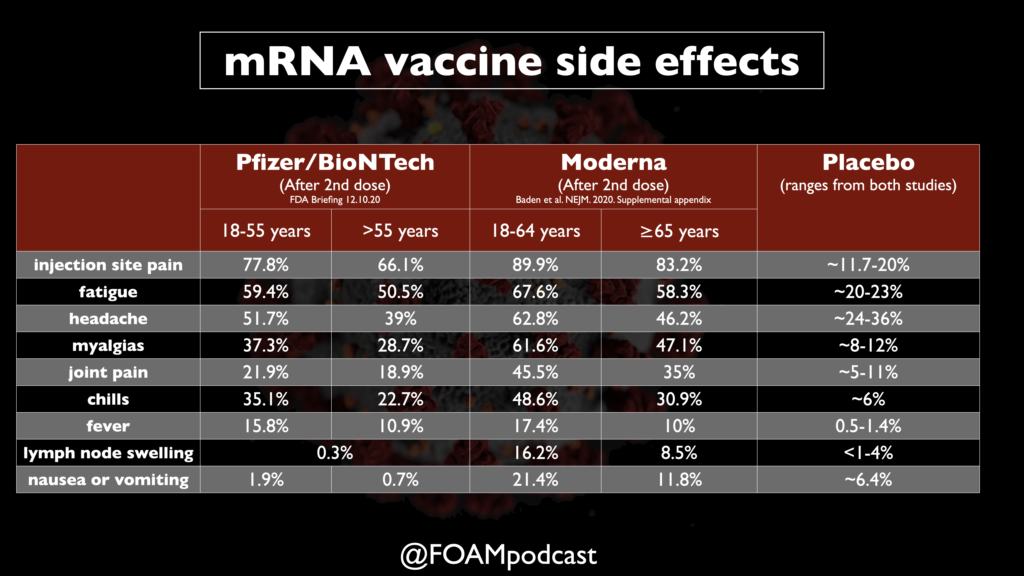
Moderna vaccine data
Phase I dose-escalation trial (Jackson et al NEJM 2020) and small 40 patient study of immunogenicity in older adults (Anderson et al NEJM 2020). (phase III study protocol )
Phase III trial results (Baden et al, NEJM)
Pfizer/BioNTech vaccine data
Data from the FDA Emergency Use Authorization Briefing and Polack et al in NEJM
About 19,000 participants were followed for ≥2 months
AstraZeneca vaccine data
Phase I/II safety/immunogenicity study (Folegatti et al Lancet 2020)
Press Release data (11/23/20) from an interim (phase III trial protocol)
Lancet manuscript Phase 2/3 trial results
Johnson & Johnson vaccine data
Phase I/IIa safety/immunogenicity study (Sadoff et al MedRxiv.org [pre-print])
Novavax vaccine data
In this episode we review Cannabinoid Hyperemesis Syndrome (CHS / Cannabis Hyperemesis Syndrome) which is characterized by
The nausea and vomiting may be temporarily relieved by hot showers but can be refractory to traditional antiemetics, such as ondansetron and the butyrophenones (haloperidol/droperidol) have been anecdotally used with success, as has capsaicin. We review new articles on the treatment of CHS
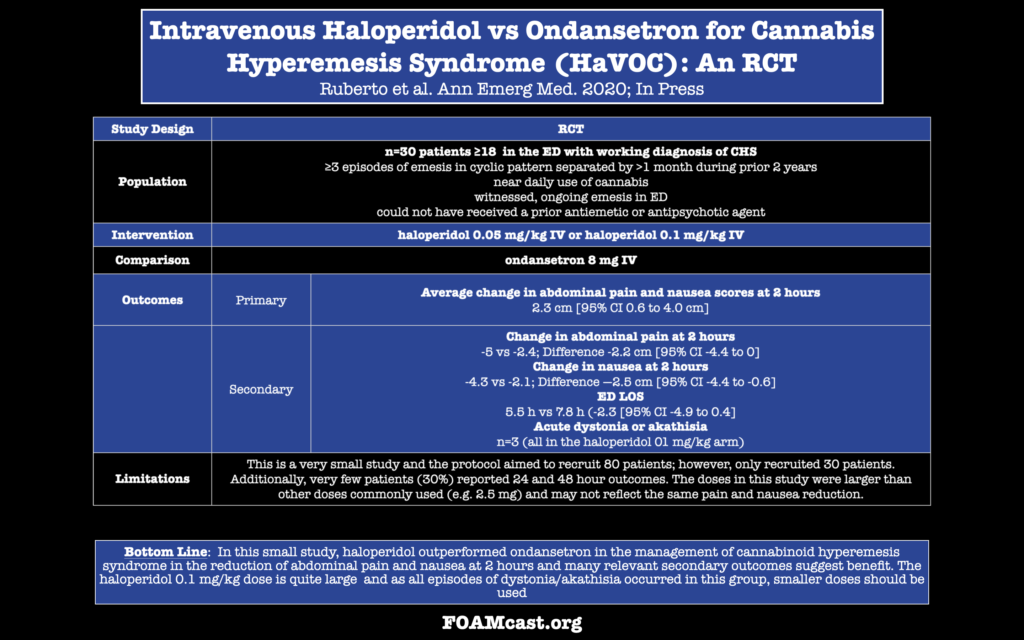
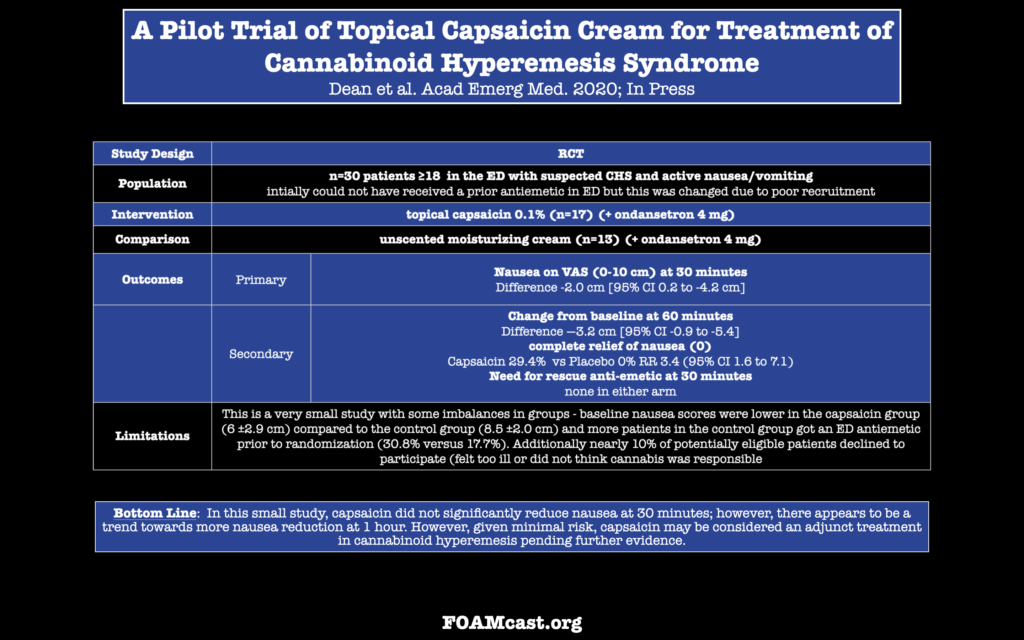
Monoclonal antibodies have garnered attention recently as a potential therapy for individuals infected with SARS-Cov-2.
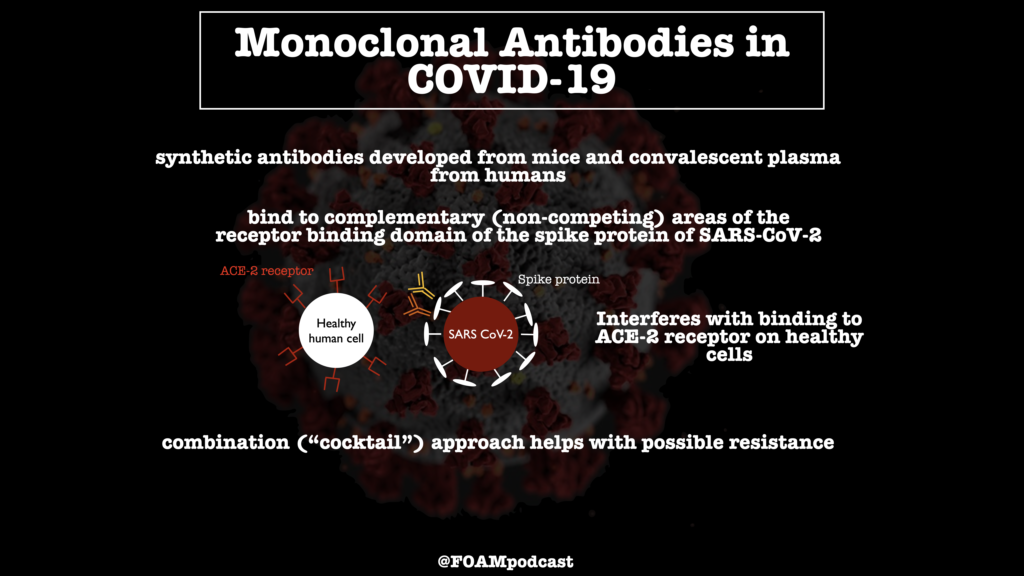
Regeneron has released preliminary data here.
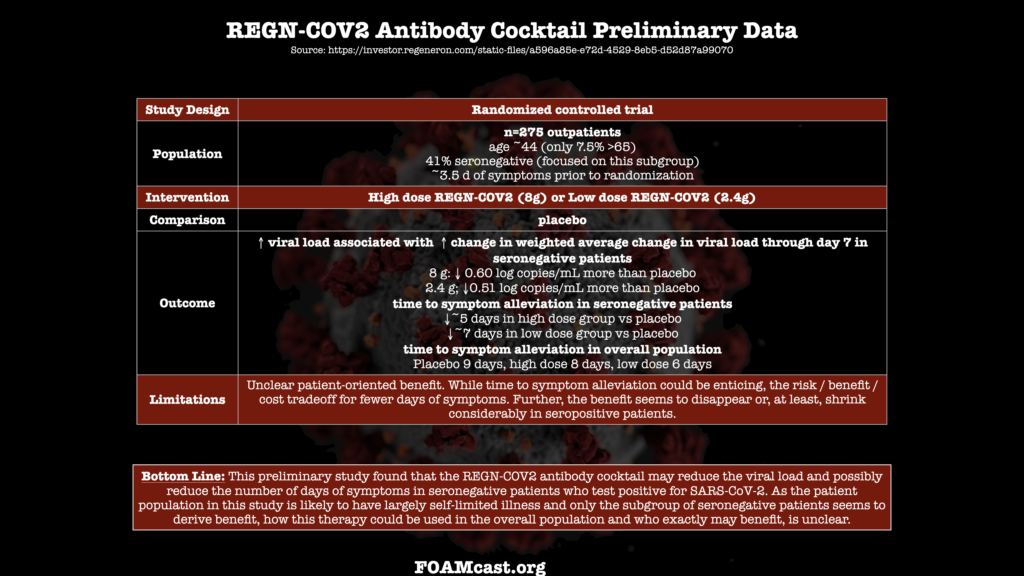
Eli Lilly has also reported preliminary results on a trial of their own monoclonal antibodies. Press release here

High flow oxygen modalities have been restricted in some institutions due to concern for transmission to health care workers. Endotracheal intubation is one of the most aerosol generating procedures, but the exact risk associated with high flow nasal cannula (HFNC) and non-invasive ventilation is unknown. A 2012 meta-analysis reports on a single study that reported on high flow oxygen, but didn’t provide a definition for this.
We review a study (Westafer et al) that describes trends in health care worker infections at an institution before and after implementation of a protocol that increased use of high flow nasal cannula during the COVID-19 pandemic.

Tools to estimate mortality risk in patients with pulmonary embolism exist, including the Pulmonary Embolism Severity Index (PESI), the simplified PESI (sPESI), and the Bova score. We review an article in JAMA Network Open by Barnes et al.
